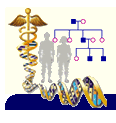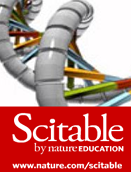"Bases Genéticas de la Vida"
3er semestre licenciatura en Biología Plan 2025. Facultad de Ciencias UNAM.
Temas
1. Introducción (2 horas teóricas)
1.1. Perpetuación y reproducción en biología
1.2. Continuidad y genética
1.3. Reproducción y desarrollo
2. Biología reproductiva (6 horas teóricas- 2 horas prácticas)
2.1. Reproducción asexual. Fisión y gemación
2.2. Partenogénesis
2.3. Reproducción sexual
2.4. Meiosis como fuente de variabilidad
2.5. Gametogénesis
2.6. Fecundación
3. Determinación genética del sexo (8 horas teóricas- 4 horas prácticas)
3.1. Mecanismos cromosómicos
3.2. Mecanismos génicos
3.3. Mediante equilibrio génico
3.4. Mediante Haploidía-diploidía
3.5. Mecanismos ambientales y epigenéticos
4. Mutación (8 horas teóricas- 2 horas prácticas)
4.1. Conceptos de mutación
4.2. Bases moleculares de la mutación
4.3. Tasa y frecuencia de las mutaciones
4.4. Reparación del DNA libre y sujeta a error
4.5. Mutación como fuente de variación
5. Análisis genotípicos y fenotípicos (12 horas teóricas- 4 horas prácticas)
5.1. Relaciones alélicas de un gen
5.2. Interacciones entre genes
5.3. Poligenes
5.4. Genes ligados
6. Herencia citoplásmica y de organelos (4 horas teóricas- 4 horas prácticas)
6.1. Herencia de mitocondrias y cloroplastos
6.2. Efectos maternos temporales, permanentes y letales
7. Inducción de patrones (8 horas teóricas- 4 horas prácticas)
7.1. Complejos homeóticos
7.2. Morfógenos y genes maternos
7.3. Función de los genes homeóticos
7.4. Epistasis durante el desarrollo
7.5. Epigenética del desarrollo
8. Desarrollo de patrones (8 horas teóricas- 4 horas prácticas)
8.1. Expresión diferencial de genes
8.2. Formación de agregados celulares no tisulares
8.3. Estirpes celulares y multicelularidad
8.4. Diferenciación celular y organización tisular
8.5. Establecimiento de tejidos en distintos linajes de eucariontes
8.6. Diversidad de tejidos
8.7. Formación de órganos, aparatos y sistemas
9. Aplicaciones (8 horas teóricas- 6 horas prácticas)
9.1. Modelos de laboratorio
9.2. Organismos genéticamente modificados (OGM)
9.3. Terapia génica, ingeniería de tejidos y fecundación in vitro
9.4. Desregulación y formación de tumores
Bibliografía básica
- Bell, G. 2019. The masterpiece of nature: the evolution and genetics of sexuality. Routledge, Londres.
- Brooker, R. J. 2017. Genetics: Analysis and principles, 6th ed. McGraw-Hill, Nueva York.
- Cummings, M. R. 2021. Human heredity: Principles and issues, 12th ed. Cengage Learning, Nueva York.
- Gilbert, S. F. & M.J. F. Barresi. 2018. Developmental biology, 11th ed. Sinauer Associates, Sunderland.
- Hartl, D. & B. Cochrane. 2018. Genetics: Analysis of genes and genomes, 9th ed. Jones & Bartlett Learning, Burlington.
- Hartwell, L., M. L. Goldberg, J. Fischer & L. Hood. 2021. Genetics: From genes to genomes, 6th ed. McGraw-Hill Education, Nueva York.
- Klug, W. S., M. R. Cummings, C. A. Spencer, M. A. Palladino & D. Killian. 2019. Concepts of genetics. Pearson, Nueva York.
- Pierce, B. A. 2015. Genética. Un enfoque conceptual, 5ª ed. Editorial Médica Panamericana, Ciudad de México. Snustad, D. P. 2022. Principles of genetics. John Wiley & Sons, Hoboken.
Bibliografía complementaria
Biología reproductiva
- Fusco, G. & A. Minelli. 2019. The biology of reproduction. Cambridge University Press, Cambridge.
- Kaneda, T. & J. Y. Motoki. 2012. Gastrulation and pre-gastrulation morphogenesis, inductions, and gene expression: similarities and dissimilarities between urodelean and anuran embryos. Developmental Biology, 369(1): 1-18.
- Martin, E. 1991. The egg and the sperm: how science has constructed a romance based on stereotypical male-female roles. Signs: Journal of Women in Culture and Society, 16: 485-501.
- O’Neill, S. D. & J. A. Roberts. 2002. Plant reproduction. CRC Press, Boca Ratón.
- Schön, I., K. Martens & P. van Dijk. 2020. Lost sex: The evolutionary biology of parthenogenesis. Springer, Dordrecht. Stern, C. 2004. Gastrulation: From cells to embryo. Cold Spring Harbor Press, Nueva York.
Determinación genética del sexo
- Barret, S. C. H. 2002. The evolution of plant sexual diversity. Nature Reviews Genetics, 3: 274-284.
- Ellegren, H. 2000. Evolution of the avian sex chromosomes and their role in sex determination. TREE, 15(5): 188-192.
- Ezaz, T., R. Stiglec, F. Veurunes & J. Marshall. 2006. Relationships between vertebrates ZW and XY sex chromosome systems. Current Biology, 16: R736 -R743.
- Ha, N. Q. 2015. Diagnosing sex chromatin: a binary for every cell. Historical Studies in the Natural Sciences, 45: 49-84.
- Renner, S. S. 2016. Pathways for making unisexual flowers and unisexual plants: moving beyond the “two mutations linked on one chromosome” model. American Journal of Botany, 103: 587-589.
- Renner, S. S. & R. E. Ricklefs. 1995. Dioecy and its correlates in the flowering plants. American Journal of Botany, 82: 596-606. Richardson, S. S. 2012. Sexing the x: how the X became the “female chromosome”. Signs, 37: 909-933.
- Scütt, C. & R. Nöthiger. 2000. Structure, function and evolution of sex-determining systems in Dipterian insects. Development, 127: 667-677.
Mutación
- Carlson, E. A. 2011. Mutation: The history of an idea from Darwin to genomics. Cold Spring Harbor Laboratory Press, Nueva York. Haber, J. E. 2016. Genome stability: DNA repair and recombination. Garland Science, Nueva York.
- Hanaoka, F. & K. Sugasawa. 2016. DNA replication, recombination, and repair: Molecular mechanisms and pathology. Springer, Tokio. Lipshitz, H. D. 2013. Genes, development and cancer: The life and work of Edward B. Lewis. Springer, Dordrecht.
Análisis genotípicos y fenotípicos
- Bonduriansky, R. & T. Day. 2018. Extended heredity: A new understanding of inheritance and evolution. Princeton University Press, Princeton. Fletcher, H. & I. Hickey. 2013. Genetics, 4th ed. Garland Science, Nueva York.
- Nussbaum, R. L., R. R. McInnes, F. W. Huntington. 2015. Thompson & Thompson Genetics in Medicine. Elsevier, Saunders.
- Pierce, A. B. 2023. Fundamentos de genética. Conceptos y relaciones. Editorial Médica Panamericana, Madrid.
Herencia citoplasmática y de organelos
- Castillo, V., R. D. Uranga & G. F. Zafra. Genética clínica. El Manual Moderno, Ciudad de México.
- Reddy, T. V. 2023. Bases genéticas del síndrome de ovario poliquístico: Comprender el papel de las mitocondrias en la fisiopatología del SOP. Ediciones Nuestro Conocimiento.
- Inducción de patrones
- Causier, B., Z. Schwarz-Sommer & B. Davies. 2010. Floral organ identity: 20 years of ABCs. Seminars in Cell & Developmental Biology, 21: 73-79.
- Wolpert, L., T. Jessel, P. Lawrence, E. Meyerowitz, E. Robertson & J. Smith. 2010. Principios del desarrollo. Editorial Médica Panamericana, Ciudad de México.
Desarrollo de patrones
- Hall, B. K. 2008. Fins into limbs: Evolution, development, and transformation. University of Chicago Press, Chicago.
- Martínez-Arias, A. 2023. The master builder: how the new science of the cell is rewriting the story of life. Basic Books, Nueva York. Saboowala, H. 2018. What is “Evo-Devo”? A concise review. Kindle edition.
- Steeves, T. A. & I. M. Sussex. 1989. Patterns in plant development, 2nd ed. Cambridge University Press, Cambridge.
Aplicaciones
- Knoepfler, P. 2015. Gmo Sapiens: The life-changing science of designer babies. World Scientific Publishing Company, Singapur. McClelland, G. 2015. Genetically modified organisms damage your DNA: Save our planet - a call to action. Kindle edition.
- Rodríguez, E. 2010. Reflexión bioética sobre el uso de organismos genéticamente modificados. Bioethikos, 4(2): 222-227. Scheres, B. & W. H. van der Putten. 2017. The plant perceptron connects environment to development. Nature, 543: 337-345.










.png)

0 comentarios:
Publicar un comentario